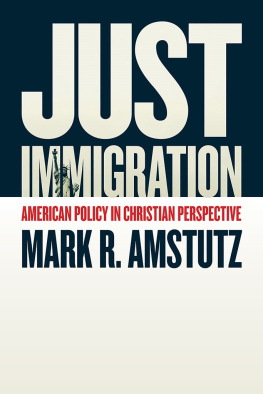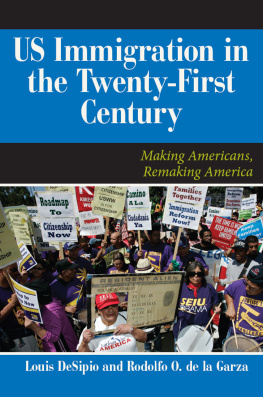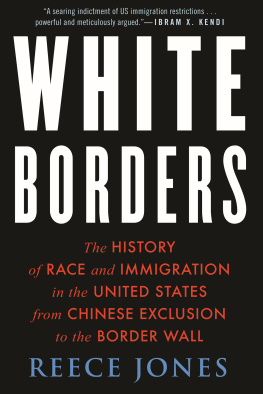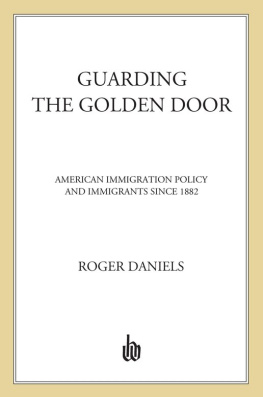There Were No Cats in America:
An American Tail Enters Trumps America
By
Adam DeSimone
Copyright 2017, Adam DeSimone. All rights reserved.
Editorial guidance provided by Erikas Editing, New York City, NY
Cover photo credit: Lucas Franco (Brazil)
ISBN: 978-0-692-93221-6
Contents
There Were No Cats in America:
An American Tail Enters Trumps America
~Who are you going to believe? Me, or your own eyes? Warren T. Rat
I ts striking how relevant the film An American Tail is nowadays. If youre a child of the 80s, the tiny version of yourself who saw the movie probably didnt pay attention to anything past the animated mice or the upbeat music, and, almost certainly, you didnt think too deeply about the films themes. And why would you? You were a child living at a moment when America had recently shaken off the malaise of the 70s and the shock of the 60s. When the film celebrated Americas immigrant story, the mood completely aligned to the times.
Its hard to see a film like this being created today, and its a pity that An American Tail has largely been forgotten. Ask any high school student if the phrase, There are no cats in America, means anything to them and youll be greeted with confused silence. While the film is a bit shy of a joyful romp, it crams an unbelievable amount of history into its eighty-minute runtime. Unfortunately, many of the films historical references need a trained eye to detect, but once the subtext is brought forward the films historical value becomes obvious.
More importantly, in the context of our political climate today, An American Tail is a resistance piece in itself. By showing the aspirations of immigrant refugees and their admiration of America, this film subverts xenophobic attitudes. An American Tail is worth a second viewing as an adult not because of its nostalgic value, but because it exposes cycles of history that influence our behavior as Americans today, and reminds us of the rights and responsibilities that come with living in this country.
Part I:
Immigrants Arrive in America
T he opening scene of An American Tail introduces us to the Mousekewitz family. They eke out an existence in Shostka, Russia in the year 1885, and the opening dialogue lets us know they have lived in their home, under the constant fear of persecution, for at least three generations. In a private conversation, the Mousekewitzes mention their oppressors, and, as if being summoned, their home begins to quake from a galloping rampage headed their way. An unnamed character screams, Cossacks! to alert his neighbors of the coming trouble, but for unclear reasons the peaceful town that the mice share with their human counterparts is burnt to the ground. A group of cats, the Mousekewitzes stated antagonists, maraud through the village in tandem with the horse-mounted militia, and both groups seem to revel in their own malice. As the attack ends, the Mousekewitzes watch their smoldering community collapse.
A child watching could tell you something bad has happened in this opening scene, and that cats chased the mice out from their homes. The adult watching the film should see so much more. While heavily sanitized, the opening scene is in fact depicting pogroms that targeted Jews and were typical of 1880s Russia. When thinking of immigrant stories in general, fear of persecution, especially from the government, is called a Push Factor. Push Factors are things that make you want to leave your home, and can include any number of hardships like civil war, famine, economic ruin, or climate change. In this film, its the anti-Semitism that plagued Tsarist Russia which triggered the Mousekewitzes journey.
While the opening scene is only included to provide a Push Factor for the Mousekewitzes, its important to understand that these pogroms had several unintended consequences. Aside from resulting in the establishment of Jewish communities in the United States, these attacks were key to convincing Jewish leaders that they needed to create a home state of their own. The Zionist movements origins came from these events, and the movements efforts to create the state of Israel are obviously still relevant today.[1]
Sometime after the attack, the Mousekewitzes head west to catch a ship heading for America. Once aboard, they pass the time with other weary travelers below the main deck. All of the mouse passengers mourn their Push Factors while praising the promised virtues of American life. During this scene, we learn that other societies have their own cats too. A Sicilian mouse recalls how cats killed his brother and mother, and an Irish mouse sings Too-Ra-Loo-Ra-Loo-Ral, a somber Irish lullaby, to mourn the family that the cats took from him. The effects of the recently concluded wars of Italian unification, and the continued domination of Ireland by the British (coupled with reoccurring bouts of famine), are not explicitly explained to the audience, but both certainly informed the scenes design.
Still, the song the immigrants sing is remembered for its upbeat and hopeful message. There are no cats in America reminds us of what is known as Pull Factors. Pull Factors are the reasons migrs select a country to immigrate to, and are an important component of any immigration story. Pull Factors normally include things like government stability, economic opportunity, and religious tolerance. In the late 19th century, with the American Civil War and Reconstruction efforts quickly passing into history, the U.S. seemingly had Pull Factors in abundance. In effect, There are no cats in America praises the U.S.s Pull Factors by lauding a stable government that does not persecute their citizens. Part of the songs refrain also mentions that the streets are paved with cheese, which speaks to the economic opportunities of Americas famed Gilded Age.
Next page














